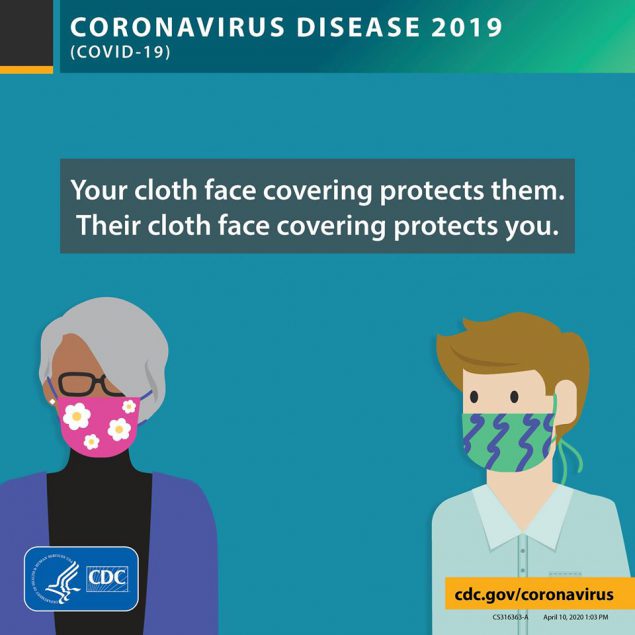by Luke Putvin | Lynnwood Times Staff
On May 18, 2020, a directive in King County was released strongly urging individuals to wear face coverings in grocery stores, retail stores, take-out restaurants, public transportation vehicles and other public areas. Soon after this, Snohomish County put out a similar recommendation to county residents.
“There are many parts of the COVID-19 pandemic that are difficult to control, but reducing contact with others and wearing face coverings are actions that the community can take that make a big difference,” The Snohomish Health District’s statement said.
“We have to do everything we can to enable our economy to open without a resurgence in cases, hospitalizations and deaths,” said Dr. Chris Spitters, health officer for the Snohomish Health District. “People wearing face coverings are protecting you, so if you are able, you should do the same to protect others.”
Snohomish Health District also noted that it is important to remember that not everyone is able to wear a face covering including young children, those with disabilities and deaf individuals who rely on facial movements for communication.
According to the Snohomish Health District’s website, wearing face covers in areas with many people, like grocery stores, may help with the spread of the virus. It does not so much protect the individual wearing the face cover as it does potentially protect others in case the individual wearing the mask is asymptomatic. Wearing face covers is especially recommended in areas where it is difficult to stay more than six feet apart.
“If you don’t wash your hands often or if you are fidgeting with your face cover and touching your face more because you are wearing it, the face cover is counter-productive,” the Snohomish Health District’s website says. “A cloth cover also does not make it OK to be within six feet of others if you can avoid the contact. Social distancing is still a critical piece of our community’s response to this virus.”

Certain steps need to be taken in order to productively wear a face covering. According to the Centers for Disease Control (CDC), individuals should wash their hands before putting on the face covering. Then, put it over your nose and mouth and secure it under your chin. The mask should fit snugly against your face, but you should be able to breathe easily.
When taking off your face covering, the CDC recommends not touching your eyes, nose or mouth. Place your mask into the washer and wash your hands. The CDC says that individuals can include the face covering in with regular laundry and should use regular laundry detergent and the warmest appropriate water temperature.
To wash your face covering by hand, make a bleach solution by mixing four teaspoons of household bleach for every quart of water. Soak the face covering for five minutes in the solution, and then rinse with cool water. Completely dry the mask before wearing.
According to Johns Hopkins Medicine, though cloth masks are not medical grade, “they may be helpful in non-patient care settings to contain coughs and to remind people not to touch their face.”
As noted before, face coverings on their own are not as effective at preventing the spread of COVID-19 as they are when used alongside physical distancing, frequent hand-washing and correct handling of the coverings themselves.
Further information regarding face coverings can be found at www.snohd.org and www.cdc.gov.
Author: Luke Putvin









